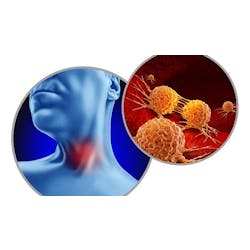by Terry L. Mingee, RDH
All things evolve. A baby grows into an adult and a seed grows into a flower. Even dinosaurs are thought to have evolved into today's many birds and other wildlife. One can also see change in policies and procedures — the evolution of our Social Security system and other government subsidies and loans, for example — and many professions. Dental hygiene has made great progress since its roots in the 19th and 20th century, but it has also regressed somewhat in modern times. The following is a timeline of the dental hygiene profession.
History of dental hygiene — 19th to 20th century
In A Practical Guide to the Management of the Teeth, published in 1819, Levi Spear Parmly emphasized the importance of daily preventive oral health behavior to keep the teeth and gingiva from oral disease. During that time, a number of dentists were becoming aware of the importance of dental hygiene in the general public. In 1845, The American Journal of Dental Science criticized dentists for neglecting the preventive part of dentistry, opting instead to focus on mechanical dentistry and surgery. Later, many dentists wanted to provide preventive care, but they barely had time to provide the services for which they were trained.
Dr. Alfred C. Fones, a leader in the oral hygiene movement, recognized the importance of teaching children appropriate oral hygiene procedures to prevent oral disease. Dr. Fones developed a program to teach the necessary techniques — prophylactic dental care and instruction in toothbrushing, flossing, nutrition, and general hygiene — to public school children in Bridgeport, Conn. His concept of training women to deliver the information was the root of today's dental hygiene profession. Dr. Fones used the term dental hygienist rather than the customary dental nurse to emphasize the importance of mouth cleanliness as a therapeutic regimen for the prevention and treatment of some oral diseases.
Although dental hygiene has changed markedly, those changes have been slow and have varied significantly throughout various geographical locations both nationally and internationally. The foundation of dental hygiene practice has been oral health promotion and disease prevention by facilitating consumers' self-care, arresting the disease process, and decreasing the incidence of oral disease. These elements have led hygienists to be recognized today as preventive oral health specialists in the Western health-care system.
Contemporary dental hygiene
Today, dental hygiene is a synthesis of facts, ideas, concepts, and philosophies — a unique entity in its own right. It is the study of preventive oral health care and the management of behaviors required to maintain good oral health and prevent oral diseases. It has become a science of assessment, diagnosis, intervention, and evaluation.
In an RDH article, Trisha O'Hehir, RDH, writes that the dental hygienist is the most logical team member to set up and maintain the preventive programs in private practice. The dentist has become so busy keeping up with innovations and changes in restorative dentistry that it has become the hygienist's responsibility to keep the practice up-to-date in the area of periodontics.
Dr. P. Axelsson conducted a survey that he reported on in his book, An Introduction to Risk Prediction and Preventive Dentistry. Results showed that the legal scope and clinical practice of most of the world's hygienists is remarkably similar. (The countries included in the survey were Australia, Canada, Denmark, Italy, Japan, Korea, the Netherlands, Nigeria, Norway, Sweden, Switzerland, Great Britain, and the United States.) The hygienist's clinical practices are characterized by a common set of procedures, including treatment planning, health history, provision of self-care, scaling, root planing, debridement and professional mechanical tooth cleaning, topical application of fluoride gels and varnishes, sealants, finishing of restorations and overhang removal, dietary evaluations and counseling, and administration of salivary and oral microbiology tests.
In some countries such as Sweden, the training program for hygienists includes behavioral science. They are also trained in local anesthesia (infiltration and regional block).
In the United States, state law regulates the clinical services provided by the hygienist. Other responsibilities may also include identification of oral or systemic health problems; thorough examination of the head and neck area; removal of calculus, stain, and plaque from above and below the gumline; exposing, developing, and interpretating oral X-rays; design and implementation of community oral health programs; and administration of nitrous oxide.
Educational levels of hygienists
Worldwide, the hygiene training program ranges from two to four years. The entrance requirement is qualification as a dental assistant or matriculation from high school. Requirements vary from country to country.
In the United States, the basic requirements are a high school diploma or GED; minimum age of 18; high school courses in mathematics, chemistry, biology and English; specific college entrance test scores; and, depending on the college, prerequisite courses in chemistry, English, speech, psychology, sociology, and liberal arts.
Once in a hygiene program, the student typically acquires 1,000 hours of classroom instruction at the accredited college, including more than 600 hours of preclinical and clinical instruction under the direct supervision of dental hygiene educators.
In a two-year, college-based program, the student will be expected to take many of the subjects mentioned above. For a four-year, bachelor's degree program, the student takes hygiene courses in conjunction with or after an associate's degree in applied sciences.
Preceptorship-trained hygienists
The word preceptorship comes from the word preceptor, which means teacher or instructor. In the case of dental hygiene, it means a practicing dentist trains a person "on the job" to perform dental hygiene duties instead of requiring a two- or four-year formal, accredited education program and national/regional examinations to obtain a license. Preceptorship-trained hygienists are also known as preventive dental assistants (PDAs).
The Kansas Dental Practice Act states that supragingival scaling and coronal polishing can be done under direct supervision of the dentist along with other dental assistant duties. The Alabama practice for preceptorship-trained hygienists is also supragingival prophylaxis, coronal polishing, and other dental assistant duties, but the Alabama State Board of Dentistry states that its program is not "preceptorship."
The Texas Dental Practice Act states that preceptorship-trained hygienists must be able to perform full-mouth prophylaxis (polishing above the gumline) and be able to accurately record the location and extent of dental restorations, chart mobility, furcations, gingival recession, keratinized gingiva, and pocket depths on the six aspects of each tooth. In sections 14-1 through 14-3, the act states that students in an alternative dental hygiene training program are not practicing dentistry (Legislature of the State of Texas, 2001).
Alternative training programs
Alabama — In 1959, an updated practice act was established in Alabama. The act requires candidates for dental hygiene licensure to be graduates of either an accredited college program or the Alabama Dental Hygiene Program (preceptorship school), which is administered by the Board of Dental Examiners of Alabama.
The American Dental Association (ADA) believes that Alabama preceptorship is an excellent model for a state desiring to increase its ratio of hygienists to dentists through a nonaccredited, state-dental-board-administered program. While the costs of the program may be attainable — $510 for all supplies and books — the graduates are limited to practicing in Alabama and may not take the National Dental Hygiene Examination.
The course takes one year to complete. Program guidelines include 180 hours of instruction in instrumentation, anatomy, physiology, radiology, emergency, periodontal disease, inflammatory process, surgical procedures, public health, and ethics.
Six exams are given during the year to test proficiency. Students must receive 368 points out of 525 (70 percent average) and complete 75 prophylaxes during the year. All instruction is given on the University of Alabama at Birmingham campus.
Kansas — On April 23, 1998, the Kansas legislature passed House Bill 2724 stating that any dental assistant may perform coronal polishing, and dental assistants with a board-approved course may scale supragingivally. These individuals will not be able to take any form of national examinations or provide services outside of Kansas.
The Kansas Dental Association wants to continue this type of training. Senate Bill 50 [SB50] removes the expiration and would allow preceptorship to continue. This program is not replacing the dental hygienist, so it is not legally considered preceptorship.
In Kansas, the requirements to enter the program are at least six months' experience as a chairside dental assistant to be a certified dental assistant or two years' experience as a chairside assistant and completion of a dental assistant certification test. Once accepted into the program, the course consists of 90 hours of classroom and laboratory instruction. Clinical competency must be demonstrated.
Texas — On May 29, 2001, the preceptorship bill passed both the House and the state Senate. Dentists will be able to teach clinical dental hygiene to assistants in their dental offices. The program is restricted to nonmetropolitan, rural, and underserved areas of the state. The patient must be informed that a "trainee" is delivering the dental hygiene services vs. a licensed registered dental hygienist.
Texas was the second state to formally allow preceptorship training for dental hygiene. Effective Sept. 1, 2001, HB3507 containing preceptorship became law. To obtain a dental hygiene license from the Texas State Board of Dental Examiners, graduates from alternate training facilities must pass the same examinations required of graduates of traditional programs.
The Texas State Legislature passed HB3507 under the assumption that there was a statistical need for providers in certain areas where there was a shortage. Another predominant reason for preceptorship is that the ADA has an official policy that urges constituent dental associations to develop new clinical responsibilities for dental assistants to include coronal scaling and polishing under direct supervision.
To enroll in the preceptorship program in Texas, one must have performed clinical dental assistant duties for at least two years. Preceptors must complete 1,000 hours of clinical training under the supervision of a qualified dentist or hygienist, satisfactorily complete 75 full-mouth prophylaxes, and demonstrate the ability to perform a variety of specific tasks, such as record the location and extent of dental restorations, chart mobility, etc. Didactic requirements are four semesters of education from an accredited dental hygiene school. It is possible to complete educational requirements in the classroom, through distance-learning over the Internet, or by video-conferencing.
The dental office must have a notice to patients that the practice is participating in and approved as an alternative dental hygiene training program and that students may be performing their services.
A firsthand account
The Nevada Dental Hygienist Association (NDHA) published a two letters about preceptorship to its members. At a recent NDHA annual session, a member stood up and said she was formerly from Alabama and almost chose the preceptorship program over an accredited dental hygiene program at Wallace, the only accredited hygiene course in Alabama. What changed her mind was when the dentist came back from his preceptorship course, handed her a book and instruments (a 204S and a sickle scaler), and told her to start cleaning teeth. She also said that she had to complete 75 prophylaxes before she could take any of the other courses. She said preceptorship hygienists would use the closed dental hygiene clinic at UAB for some classes and when patients would ask them where they went to school, they would say UAB. The patients would leave thinking the preceptor received a degree from UAB.
Another Alabamian said that preceptor-trained hygienists have blurred the line so badly that patients who ask, "Where did you go to school?" are misled. She discovered this when she tried to find a college-trained hygienist to treat her. She called several offices and some of the receptionists would have to leave their desks to ask the hygienist where and if she had gone to school. One of the receptionists had to check twice because of vague answers.
You have to "pin down the hygienist" and ask if she has an associate's degree or a bachelor's degree to find out if she is college-trained. Now that preceptors can have RDH on their nametags legally, people may not be prompted to ask about educational backgrounds. The hygienist above finished her letter by saying that the preceptors talk about their supragingival instruments, but "You will never hear them talking about subgingival instruments, because they are not trained to use them."
Risk to patients
Kristy Menage Bernie, RDH, cites some risks of alternate training for dental hygienists. In an article for the California Dental Hygienists' Association, she observes that any evidence or research that proves a threat or actual harm to patients may not be discovered until time has passed by, due to the slow progression of periodontal disease. Think of it this way. A 6 mm defect with calculus subgingivally gets scaled supragingivally by the PDA time after time. Will harm eventually be realized? We only need to look at recent data correlating periodontal disease and total body health to realize that the dental hygienist — not the PDA — is a key member of the dental team. Bernie states, "The bottom line is that preceptorship and the PDA are not in the best interest of the consumer."
On-the-job training is not sufficient enough to adequately train dental hygienists to provide safe patient care. Providing a complete prophylaxis that prevents oral disease is a complicated skill requiring the use of a razor-sharp instrument. An unskilled and inexperienced oral health-care worker runs a greater risk of jeopardizing a patient's health. Periodontal disease and its bacteria has been linked to life-threatening diseases, such as heart disease, diabetes, respiratory ailments, and stroke.
Dianna Prachyl, BSDH, MS, and governmental chair of the Texas Dental Association, believes that delivering proper patient care involves the use of a razor-sharp instrument that requires practice for the skill. It could cause a serious threat to people who are already compromised by other health problems. Health care should be delivered by qualified, formally educated dental hygienists.
The practice of dental hygiene has evolved over time, but many of the changes have been to the detriment of the profession and to the risk of patients. If the public is educated on the changes that are taking place, mostly at their risk, dental hygienists can stand up to the ADA and say, "No more!" One only needs to refer back to the concept of the 6 mm subgingival pocket with calculus to answer the question: Who would you like to have clean your teeth on a regular basis — the dental hygienist or the preceptor?
References available upon request.
Terry Mingee, RDH, graduated from Parkland Community College in Champaign, Ill., in 1987.He has been practicing at Great Lakes Naval Base for 14 years.He is enrolled full-time at Southern Illinois University, earning a bachelor's degree in health care management. He has also taught clinical skills at College of Lake County.His plans include teaching and working toward a master's in public health.
A college education prepares the hygienist for many opportunities in the dental health-care field — administrator/manager, change agent, clinician, client advocate, educator/oral health promoter, and researcher. The roles of today's professional dental hygienist are interrelated.
• The administrator/manager may work with health promotion programs, disease prevention programs, educational institutions, clinical practices, managed-care programs, community health agencies, armed forces, and/or the oral health-care industry.
• The change agent may work with the legislature, hospitals, community health agencies, as a client care coordinator in health-care facilities, entrepreneur, coordinator of oral health-care services for the disabled, nursing home services director, state dental health programs administrator, and community project leader.
• As a clinician, the hygienist may work in managed-care programs, hospitals, community health projects, extended care facilities, and clinical practice.
• As a client advocate, the hygienist will provide services in public dental programs, consumer groups, dental referral systems, periodontal disease screening centers, individual and group self-care programs, and clinical practice settings.
• The dental hygienist educator/oral health-care promoter may work in public health, public schools, dental schools, dental hygiene schools, clinical and managed-care programs, and/or staff development in health-care agencies.
• As a researcher, the hygienist may work in research institutions, higher education, the oral health-care industry, and/or clinical practice.
Nebraska — The governor of Nebraska signed into law LB209, a health clean-up bill, which will add the phrase accredited by the Commission on Dental Accreditation of the American Dental Association. What this means is that a dental hygienist must graduate from an accredited dental hygiene program of not less the two years to practice dental hygiene in Nebraska.
Colorado — Colorado is the only state that has independent practice for the dental hygienist. There are no restrictive guidelines or other qualifications for independent practice in Colorado. The only requirement is state licensure for dental hygiene.
Other states — These states permit hygienists to perform without supervision in nursing homes, community centers, and other underserved institutions where there is a need for oral health care: Connecticut, Washington, California, Oregon and Nevada.








